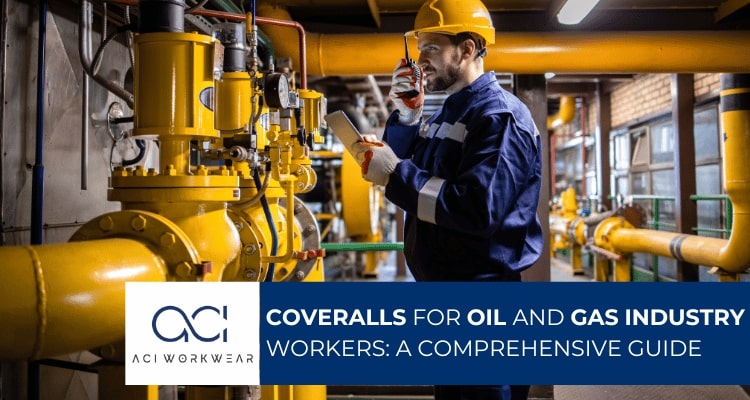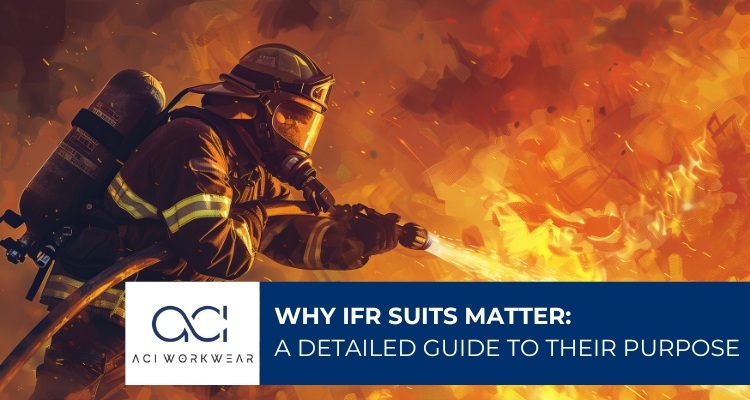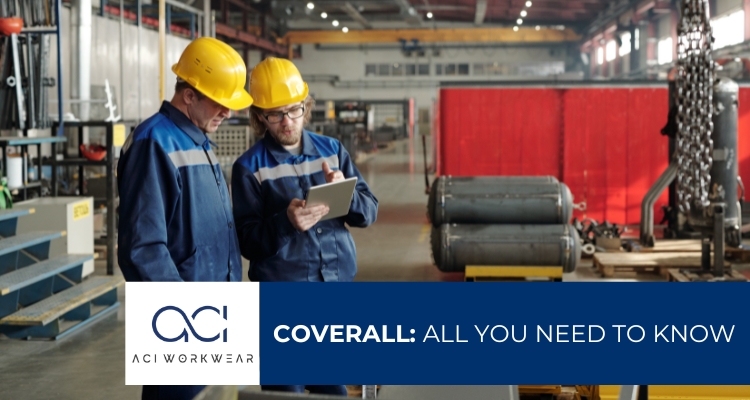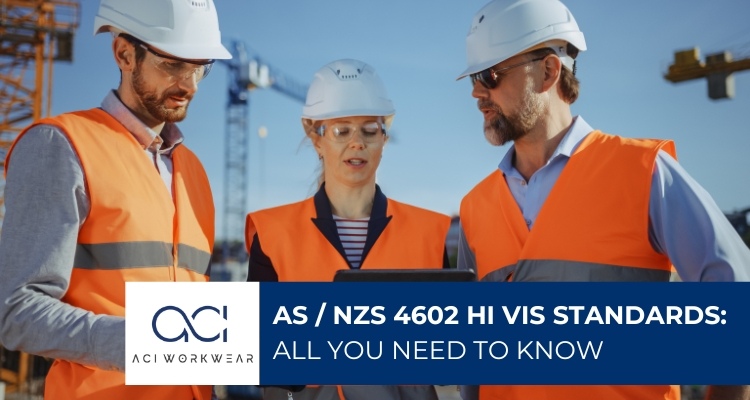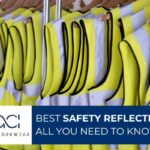
Best Safety Reflective Jackets: All You Need to Know
July 15, 2024
High Visibility Clothing: Ensuring Safety in Low-Light Environments
August 13, 2024Introduction
Workers work in a difficult and dangerous environment in the oil and gas industry. They are often located in remote areas, carrying out risky works such as exploration, drilling, pumping, or extracting oil in extreme weather conditions.
The oil and gas industry are one of the industries facing various workplace hazards like extreme temperatures, heavy machinery, hazardous chemicals, dust, polluted air, slippery surfaces, heat, and fire. To ensure safety in this challenging industry, it's crucial to provide top-notch safety gear like coveralls.
For choosing the best coveralls for oil and gas industry workers, we have simplified every single detail for you. We help you make the perfect choice with this comprehensive guide on the coveralls for oil and gas industry workers.
Let's explore each point related to the coveralls:
Coveralls Simplified
Coveralls, also called overalls and boiler suits, are versatile work clothing for workers. They are designed to be worn over a worker's regular clothes to protect them from workplace dangers and provide a unified, professional look to the workers.
Coveralls are used by workers in cleaning, maintenance, and painting. There is also specialized clothing available to protect against specific workplace hazards, such as FR (flame retardant) and AS (anti-static) properties.
Purpose of Coveralls
You may ask why coveralls are needed for workers and what can be the purpose of coveralls. Let's discuss why workers need coveralls:
- Coveralls are important in many jobs, acting as both a uniform and protective clothing. They protect the workers from various dangers, such as fire, chemicals, and poor visibility. However, workers get different coverall options to choose from to meet their safety needs.
- High-visibility coveralls are essential for workers near roads and moving vehicles, especially in bad weather. These clothes improve visibility and protect against dirt and other potential hazards.
- In very cold weather, insulated coveralls provide an extra layer of warmth for workers, ensuring both protection and comfort.
- Coveralls are not just for professionals; anyone working in a dusty environment can benefit from them. Workers can easily find coveralls that meet their specific needs with a wide range of fabrics, sizes and designs available.
Types of Coveralls for the Oil and Gas Industry Workers
There are many coveralls available for oil and gas workers. It's important to choose the right coverall for your workers. Coveralls that can be reused are an option. You can even make custom coveralls for your workers. Coveralls made for specific tasks like drilling or pumping are the most suitable for gas and oil industry workers. As an employer, you can choose one from various types of coveralls in the oil and gas industry, such as:
- Disposable Coveralls
- Washable Coveralls
- Flame-Resistant Coveralls
- Chemical-Proof Coveralls
- Reflective Coveralls
- All-Weather Coveralls
- Welding Safety Coveralls
- Job-Specific Coveralls
Coveralls for Oil and Gas Industry Workers
Working in the oil and gas field can be dangerous in many ways. So, it's crucial to give workers the best quality personal protective equipment (P.P.E.). Coveralls are the safest option for workers in these types of industries, shielding them from various hazards like chemicals, fire, extreme temperatures, and more.
The Role of Coveralls in Ensuring the Safety of Workers in the Oil and Gas Industry
The role of coveralls becomes more crucial when you need to ensure the safety of your workers. Especially, in the oil and gas industry, the coveralls play a pivotal role whether it is protecting your workers from workplace hazards, making them safe from fire and explosions, skin protection from toxic gases, or protecting from intense weather, the coveralls cover workers safely.
We can assess the important role of coveralls in ensuring the safety of workers in the oil and gas industry with these advantages of coveralls in the oil and gas industry. Let's explore what are the benefits of using coveralls for workers in the oil and gas industry closely.
1. Full-body Protection
Coveralls provide full-body protection as personal protective equipment (P.P.E.) against workplace hazards, creating a barrier between the skin and harmful substances.
2. Fire Resistant
Flame-resistant coveralls are necessary for workers in the oil and gas industries to protect them from fires and explosions. These coveralls also allow workers to escape emergencies without getting burned.
3. Skin Protection
Coveralls protect workers from harmful substances, toxic gases, and various dangerous chemicals found in oil and gas fields. They prevent direct contact with these hazards, which can lead to skin burns and other dangers.
4. Intense Weather Defense
Coveralls help reduce health problems caused by the weather and offer excellent defense from wind, rain, sun, UV rays, and high temperatures.
How to select PPE for the oil and gas industry?
Workers require various types of personal protective equipment (PPE) to address the risks they encounter.
It includes clothing for flash fires, gloves for cut and multi-hazard protection, protection from fine particles and low-level liquid splashes, and protection from concentrated chemicals under pressure.
It can be time-consuming for Health, Safety & Environment (HSE) managers to find the most suitable PPE due to the numerous manufacturers providing options.
Therefore, we discuss step-by-step process of selecting PPE for the oil and gas industry workers.
1. Identifying Hazards
Employers must choose PPE according to the regulations of the government. The selection of the right PPE depends on the employer's evaluation of workplace dangers. Such as identifying site hazards and assessment of risks involved are a crucial first step.
As an employer, you need to consult coworkers to make sure all potential hazards are recognized. Common risks include flash fires, mechanical hazards such as slick, oily surfaces, sharp edges, punctures, heat exposure, and exposure to various hazardous chemicals, dust, and solvents.
Safety professionals typically use the hierarchy of controls to minimize risks. A hierarchy of controls means eliminating risks whenever possible and, if not, opting for a safer alternative. Engineering and administrative controls can reduce risks by minimizing the chances of exposure. Once the risk reduction process is complete, PPE can be fixed to protect against any remaining risks.
2. Adjusting PPE for Safety
There are key features that PPE needs, depending on the risks you've found. Here we provide general guidance, but always consult with the PPE manufacturer like ACI Workwear to ensure you have selected the appropriate level of protection for your needs. Remember that each type of PPE—such as gowns, coveralls, gloves, and masks—should offer adequate protection.
- First, Understand the key differences between ‘inherent’ and ‘treated’ fire-resistant (FR) technologies. Inherent means that FR properties are naturally part of the fibers used in the fabric. The inherent fire resistance is built-in, long-lasting, and cannot be washed away or degraded.
- Chemical treatments are applied to enhance the flame resistance of treated fabrics. Fabrics treated with chemicals (FRT), usually made of cotton or cotton/nylon blends, may lose their FR properties depending on how they are washed or exposed to chemicals in the workplace.
- Secondly, look for coveralls that have features such as a fabric with a strong barrier against chemical permeation to protect against various chemicals, the ability to repel inorganic aerosols and liquids in low concentrations, and the ability to block the penetration of solid particles.
- To ensure optimal protection, make sure the coverall garment is tested against the specific chemical hazards you have identified for maximum safety. Ask your workwear manufacturer for permeation data against your specific chemicals.
- You need to reduce the likelihood of exposure to chemicals and extreme temperatures to minimize dangers in the oil and gas industry.
- PPE manufacturers have developed protective gloves made of Kevlar fabric using advanced material technology. These gloves offer necessary protection while still allowing workers to operate machinery and tools.
- Lastly, pay attention to an electric arc flash which is a serious and often misunderstood electrical hazard. An electric arc is a high-current discharge that produces intense heat and bright ultraviolet light. Human error, such as a worker touching the wrong surface with a test probe, is the most common cause of an arc flash.
3. Compliance with The Rules
Make sure to compare PPE to national and international standards and ensure it meets your specific protection needs. You need to provide thorough information about the PPE and provide them instructions and training on how to use it and how it interacts with other PPE.
You need to ensure that the workers' PPE is suitable and well-maintained. All PPE should be appropriate for the job and risks involved, without adding any additional risks due to the workplace, conditions, or design of the PPE.
Make sure to check the relevant regulations if you are responsible for selecting PPE for use in an oil and gas company with global operations.
4. Comfort and Ease of Use in PPE
Proper use of PPE is crucial. Comfort and fitness play a big role in worker compliance. Consider the material's softness and weight. Also check for coverall size, ability to handle the sweat and moisture, ease in putting on and removing cloth, and whether it is reusable or not. If so, then clarify what is the proper way to clean and disinfect it.
5. Ensure Safety and Save Time
Remember, HSE managers can help streamline the process of selecting the right PPE. Seek guidance from experts to determine the most suitable protective equipment for your workers.
Look for reputable PPE manufacturers with the necessary knowledge and resources. Collaborate with a reliable PPE partner who can provide support and training tailored to your specific hazards.
The Best Coverall Manufacturer in India
Now, you can understand why oil and gas industry workers need coveralls to protect themselves from workplace hazards such as chemicals, weather, and flames.
However, there are different types of coveralls available in the market, including reusable and disposable options as per your protection requirement in the field. To make an informed decision to purchase best coveralls for your oil and gas industry, you can Contact us.
ACI Workwear, is one of the best coverall manufacturers in India, providing the best quality coveralls around the globe. As a global manufacturer of industrial workwear, we have a range of PPE for oil and gas industry workers, specifically.
Get in touch with us now!






